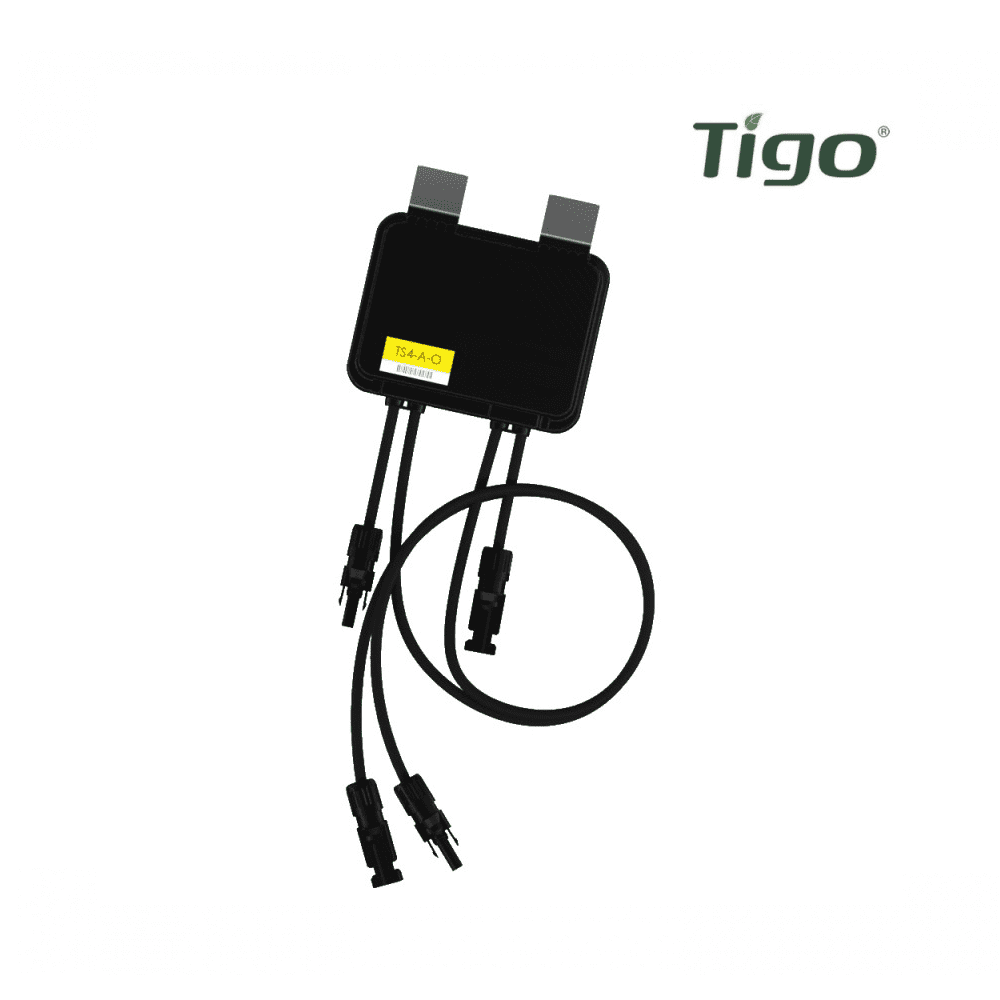**** REVIEWED – See the bottom section *****
Tigo optimisers, sold as a solution for shading and performance issues in solar arrays, have been on the market for several years. Individually priced around £50 with an additional £229 for the gateway, they have been put to the test by RenewSolar. As an ethical business, RenewSolar stands by the principle of testing what it sells to ensure it meets expected standards. Unfortunately, Tigo has not met these standards.
The workings of Tigo devices have been somewhat enigmatic, but there are theories about their operation. It is speculated that Tigo optimisers “pass current” for shaded cells, yet it was uncertain whether they function as a buck converter—a device that lowers voltage while boosting current.
There has been ongoing debate about whether the Tigo is simply a diode in a sophisticated casing. A diode allows current to flow when the voltage at the anode exceeds the voltage at the cathode by a value specified in a datasheet—approximately 0.7 V for silicon pn junction diodes—and does not conduct current when the voltage difference is below this threshold.
As demonstrated in the video, the bypass diode performs as Tigo claims, and our tests confirm this. Therefore, if you purchase a solar panel that experiences shade, do you need a Tigo? No.
Modern panels typically come with a diode, and there are three within the panel’s junction box. So, what is the Tigo doing? Nothing.
Our tests showed that the panel’s performance was consistent, with or without the Tigo. The expected voltage drop occurred with shading, even without the Tigo.
Why didn’t the Tigo optimize the panel? The panel’s diodes and the shading, which is predominantly vertical for part of the day due to parallel shading at the end of the panel, activate the bypass.
The shading pattern alternates from none to two-thirds, then swaps, and returns to no shading.
What impact does the shading have? Each cell string in the panel maintains the same voltage and current, averaging 10 volts MPP per string, resulting in a ±30 volts difference.
note, in the panel strings, they are series connected strings. meaning that the array current is three fold in the panel. it is possible to remove the junction box, lower the voltage and parallel the current from each of the strings.
How much is a diode?
£0.17 or less in bulk order, more in small orders. so what is our value of a tigo? about £0.50.
Can you retro fit diodes into solar panels?
Yes… maybe.
it depends on their fitment. you can buy a junction box kit and fit the bypass diodes, thats around £15
or you could ” in the loop” a diode to get the same effect. most panels will comes with 3 diodes in the junction box. but you will have to ensure that the tabs ( wire) in the panel can reach the box and that you have access to all strings, or just use a “in the loop” solution. or Y cables with a diode bridge.
**** REVIEWED ****
We are always actively working and testing out how things work and dont, in this case we discontinued the sale of the tigo as there was ZERO gain from them, however we were looking at Half-cut Solar panels and we saw where the tigo may actually work. Shading solar panels — RenewSolar
The way in which the half cell panels works, seems to be within the remit of the way tigo optimizers claims to work. The halfcell manages the voltage and the tigo is supposed to manage the current, skipping the draw down from shaded cells which could pull down the entire array to the low current.
If we look at how AC inverters work, in that they just add current, it is possible that the tigo could provide current injection. either at the cost of voltage (buck) or it could inject DC current at the line current or below, much the same as the AC inverters do.
We are going to have to test this and in the future this will happen.
What is clear is that Tigos as a retro fit may not work at all, and it would be a case of having to fit the array with them making this a costly venture.

One response
[…] you should take from this is how to lay the panels depending on your shading. ( and why tigo are a waste of time and money) as they were “invented” before didoes were largely […]